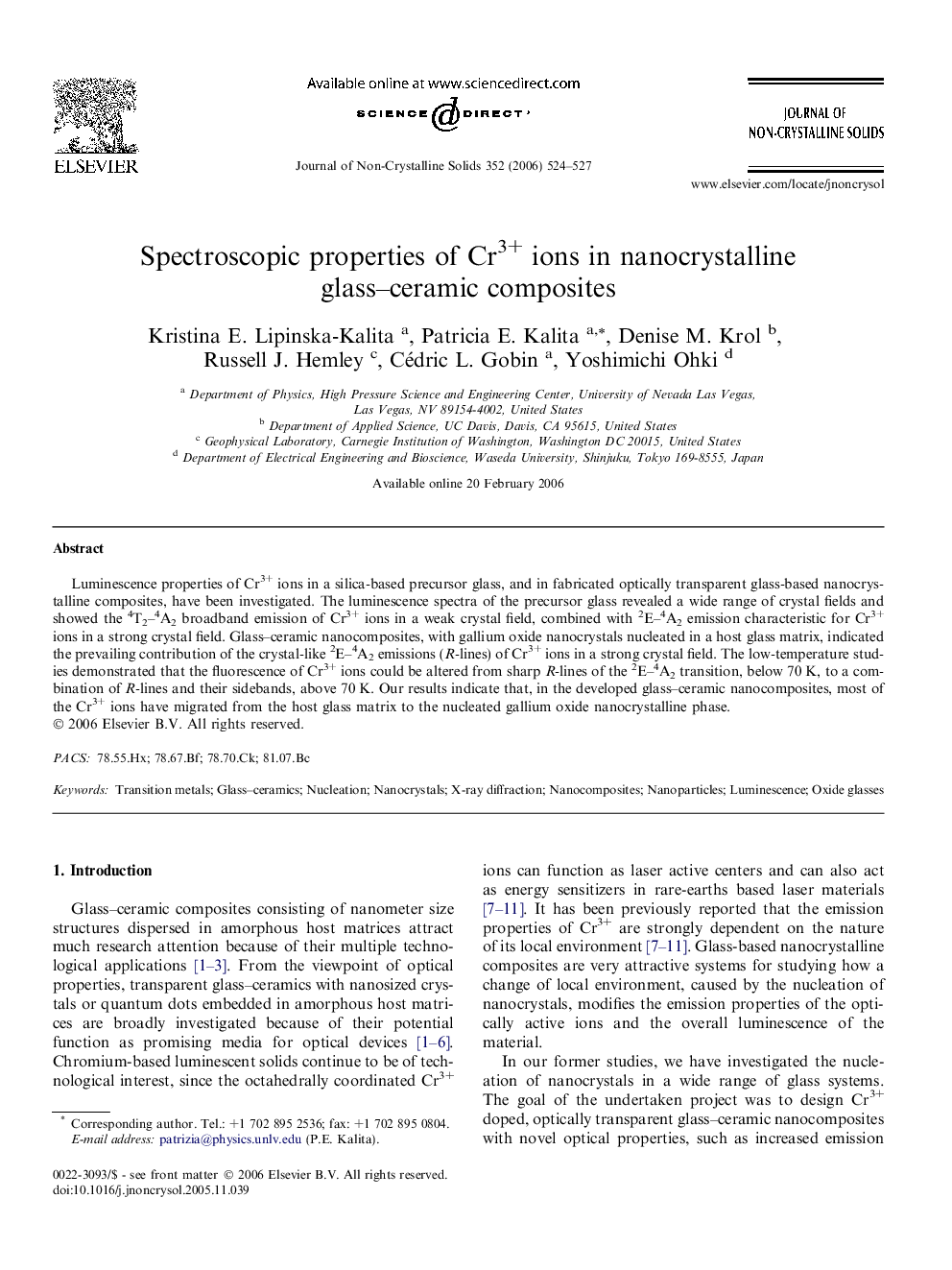| Article ID | Journal | Published Year | Pages | File Type |
|---|---|---|---|---|
| 1486495 | Journal of Non-Crystalline Solids | 2006 | 4 Pages |
Luminescence properties of Cr3+ ions in a silica-based precursor glass, and in fabricated optically transparent glass-based nanocrystalline composites, have been investigated. The luminescence spectra of the precursor glass revealed a wide range of crystal fields and showed the 4T2–4A2 broadband emission of Cr3+ ions in a weak crystal field, combined with 2E–4A2 emission characteristic for Cr3+ ions in a strong crystal field. Glass–ceramic nanocomposites, with gallium oxide nanocrystals nucleated in a host glass matrix, indicated the prevailing contribution of the crystal-like 2E–4A2 emissions (R-lines) of Cr3+ ions in a strong crystal field. The low-temperature studies demonstrated that the fluorescence of Cr3+ ions could be altered from sharp R-lines of the 2E–4A2 transition, below 70 K, to a combination of R-lines and their sidebands, above 70 K. Our results indicate that, in the developed glass–ceramic nanocomposites, most of the Cr3+ ions have migrated from the host glass matrix to the nucleated gallium oxide nanocrystalline phase.
